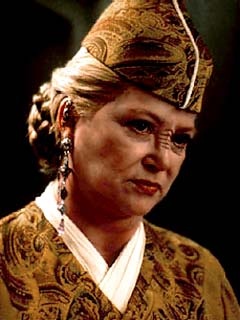“You see that I was right, now, don’t you? The truth is written in blood!”
— Revan
 From Steven Shulgach’s “Revan”
From Steven Shulgach’s “Revan”
One of the coolest things about modern technology is that it’s fairly easy to put on a Jedi robe, pick up a DSLR camera, take a few courses in Adobe AfterEffects, and create a passable lightsaber duel. Movie-making is no longer out of the hands of the populace. In a world that is more and more visual, in a society that Vines and Instagrams and Periscopes every day, it just makes sense that sci-fi and fantasy fans are going to engage with their favorite worlds and charaacters through cameras as well as pen and paper. I’ve done it myself — and making fan films is a lot of fun!
Here are some of the new fan films to hit YouTube over the summer:
Released only a few days ago and already causing ripples in Trekkie circles, Star Trek: Renegades is the story of a crew of misfits hired by Admiral Pavel Chekov (yes, that Chekov) to take care of the missions that Starfleet just can’t accomplish. There’s not a lot of traditional Trek here, despite the familiar faces — there’s very little exploration, a simplistic plot, a lot of space battles, and at least one starship captain that jumps to conclusions in a fashion that would make Picard wince and go for something a little stronger than Earl Grey. There’s a lot of potential here, though, if the main character actually lives up to her parentage, and if the writers can grasp that hope and bravery that was always central to the Trek we love even in this grittier, less perfect world.
Next up is Justice League Dark. When Guillermo del Toro dropped out of the Hollywood movie of the same name and the project was canned, a group got together to make this short about chain-smoking Constantine, forceful Zatanna and the force that tries to stop them from rescuing Zatanna’s father. The acting is fairly wooden, but the aesthetic is lovely and the effects are spot-on, and if you like these characters, it’s not a bad way to spend eleven minutes.
Finally, we have Star Wars: Revan, a labor of love from Steven, Andrei, and Jonathan Shulgach. Revan is the main character in Drew Karpyshyn’s Old Republic novel of the same name, and the fan film chronicling part of his story represents a step forward in fan-film production. Revan is a stylish, smooth labor of love. Supported through a Kickstarter campaign by a wide swath of Star Wars fans, Revan’s costumes look fantastic, its greenscreening is flawless and it benefits from a soundtrack lifted directly from the movies (something not every fan film can get away with, but Star Wars fans have been generally allowed to do). While it does suffer slightly from the wooden acting of most fan films, the pacing is on target, star Tim Torre is extremely likeable and Star Wars fans will find a lot to love here.
Oh, and if you’re wondering, this is how to animate a lightsaber in AfterEffects from Flawless Films:
– – –
Subscribe to Sacred Earthlings for new story notifications!
Read the August Third Order story, “A Tomb For Demrick Fauston,” by Fred McGavran!
















